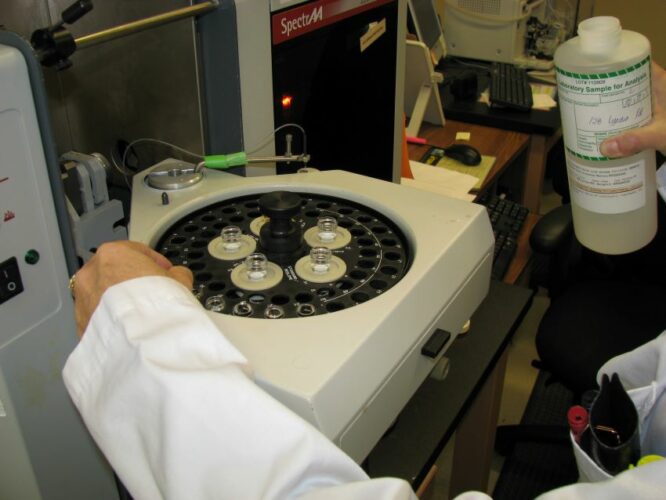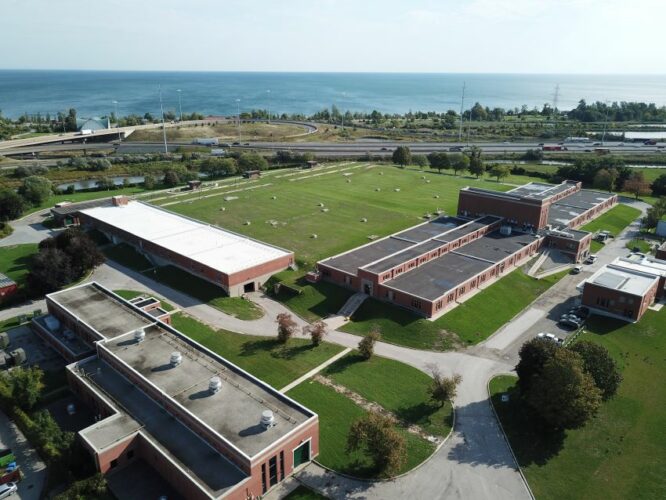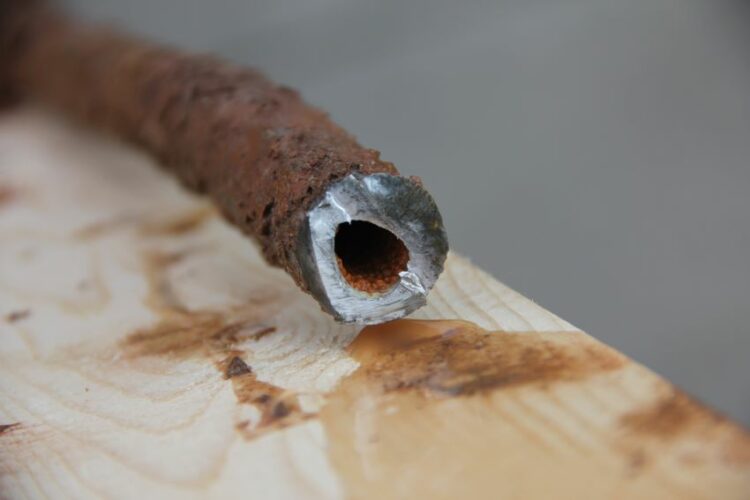Hamilton is an old city with old city problems. The second city in Canada to create its own water system, Hamilton relied on lead water services in plumbing until 1955 and lead soldering until the 1990s. With 154,352 water service lines and about 20,000 homes built before 1955 that may have lead water service lines connecting the homes to the city municipal water supply, lead was a city problem that needed to be solved.
The City conducted a lead sampling program that confirmed that more than 10 per cent of the lead samples taken from residential plumbing systems with water service lines exceeded 10 micrograms of lead per litre (μg/L). (The maximum acceptable concentration (MAC) for lead set by Ontario Regulation 169/03 is 10 micrograms per litre. In 2019, the acceptable level set by Health Canada was lowered from 10 micrograms per litre to 5 micrograms per litre.) While there are no lead watermains in the City itself, there are lead service lines on public property that needed to be identified and replaced, which would take years to accomplish.

Nick Winters, director of Hamilton Water understands that need to mitigate the effects of lead as quickly as possible to protect the City’s residents. He says the City “recognized that they needed an interim solution that would have a more immediate effect while the replacement program was underway,” leading to the implementation of a Corrosion Control Program (CCP).
Corrosion control using orthophosphate
In November 2018, the City began adding a phosphate-based inhibitor in the Woodward Avenue Drinking Water Sub System (DWSS) where lead sampling results exceeded the MAC. An essential nutrient that is an approved safe additive to drinking water, orthophosphate creates a protective barrier inside pipes which reduces the release of metals, such as lead and copper from household plumbing. The estimated average requirement of phosphorus for adults is 580 mg per day, and the City’s addition of orthophosphate amounts to an increase of no more than 1 mg/L.

Sampling and monitoring plan
To monitor the effectiveness of the program, the City of Hamilton completed a pre-implementation baseline sampling and then a post-implementation sampling to monitor the effectiveness of the lead control.
Three lead pipe loops were also installed in the Woodward Avenue DWSS to monitor the effectiveness of the corrosion control. Monthly samples showed an overall decreasing trend, with lead values at all three locations below 5 µg/L.
Winters says, “We expect the lead levels will continue to decrease as the scale thickens and strengthens from continued exposure to orthophosphate. The CCP results have been very effective in a short period of time. It’s an important program as it helps protect residents who can’t afford to replace the private-owned portion of their lead pipe, and those properties that don’t have lead supply pipes but still have leaded-brass fixtures and lead solder in their internal plumbing.”
Secondary impacts stemming from the addition of orthophosphate were also observed in the distribution system. Although pre-filter orthophosphate dosing has contributed significantly toward reducing treated water aluminum levels, precipitation of orthophosphate with aluminum was observed within the distribution system. This impact was controlled through flushing and did not contribute to aesthetic impairment noticeable to customers.

Lead education
The first step for residents was to understand the health risks associated with lead and what they can do about it. To accomplish this, a mailout was sent to all homes built before 1955, as well as to those who had a known lead service line or an unknown service type. As well, the City also inserted lead awareness pamphlets into all billing statements, launched an advertising campaign, and created an identification video to help homeowners determine if they have lead pipes. Residents are also able to call the City and book a free inspection.
Public pipe replacement
For over 30 years, The City of Hamilton has had a Sub-Standard Water Service Line Replacement Program to address customer requests related to pressure or other concerns (such as undersized services or leaks). Over the last decade, as the awareness of health risks associated with lead has grown, the focus of the program has shifted from poor pressure to sub-standard/LWSL replacements. In this capacity, the City will replace the substandard material up to the property line when the homeowner replaces the privately-owned portion. Since 2017 the City has replaced almost 4,600 sub-standard service lines, according to October 2022 data.
Residential pipe and plumbing replacement
The maintenance, repair, or replacement of the portion of the water pipe on private property is the responsibility of the homeowner. Hamilton Water is only authorized to repair or replace the portion of the water service line on City property. In August 2022, amendments made to Hamilton’s Property Standards By-Law now obligates Hamilton homeowners to switch out their portion of lead water service line to match the City’s current standards.
“In order for us to eliminate all of the lead service lines in Hamilton, we need the remaining homes to have their lead pipes replaced and so this new by-law will help us achieve this goal in protecting all our residents,” says Winter.
Lead water service replacement loan
The City offers a $2,500 interest-bearing loan for property owners who would like to replace their lead water line. In addition, homeowners who have qualified for low-income energy customer support programs such as LEAP (Low-Income Energy Assistance Program) or OESP (Ontario Electricity Support Program) are eligible for a zero-interest loan to cover the cost of the replacement. Although Hamilton Water “can’t cover the costs of upgrading private infrastructure,” says Winters, “We have provided a loan program to make it more affordable for homeowners.” Roughly 175 – 200 loans are issued every year to homeowners to replace their lead lines.
At-the-tap filters
Hamilton also has a program that provides tap filters approved for lead removal by the National Sanitation Foundation (NSF/ANSI53). These filters are provided to residents who have a lead line, and after each private water service line upgrade, to minimize impacts resulting from mixed plumbing types until the public portion is replaced (typically 4 to 8 weeks after the private side is completed due to backlog). When the program first started in 2017, 221 lead filter kits were handed out; since then more than 125 additional kits have been provided to residents. In 2020, the City amended the program to also include a jug and three filters to homeowners when a lead filter kit is requested.
The results of Hamilton’s Corrosion Control Plan are promising, and pipe replacement is accelerating. “Initially we expected it might take up to 30-40 years to find and replace all the lead lines in the City, but with the public on our side and over $1.38 million already committed in our loan program, we have effectively reduced this time frame by 10 years. We also had to manage the pandemic during this time, so we are optimistic that reducing this timeframe further is still possible,” concludes Winters.
Hamilton’s water is tested over 46,000 times a year to ensure residents can trust that the water coming out of the tap is safe to drink and that the City is continuing to be proactive to keep it this way.
For more information on Hamilton’s Lead Awareness Program visit hamilton.ca/leadpipes.
Dave Alberton is the manager of Water Distribution & Wastewater Collection for Hamilton Water.
Susan Girt is the manager of Compliance & Regulations for Hamilton Water.














